Why you can trust Tom's Hardware
Our gaming benchmarks are all run using the same Core i9-9900K PC, which includes various high-end components that you can see in the boxout to the right. We enable the XMP memory profile, but the CPU runs at stock speeds, which basically means 4.7GHz for multi-threaded workloads. We're using the same 13 game test suite as in recent reviews, with all games tested at ultra / highest / maximum settings (the label varies by game, but basically close to max settings without things like supersampling enabled). Each resolution was tested multiple times, discarding the first run and checking for consistency of performance.
As a mainstream card, the RTX 3060 primarily targets 1080p and 1440p gaming. Some lighter games may also run fine at 4K, or in some cases, you could shoot for 4K at medium settings. But despite having more VRAM than even the RTX 3080, frame rates definitely take a hit at the highest resolutions. We'll start with our 1080p benchmarks, then move on to 1440p and 4K, but we won't spend a lot of time on that last one as it's mostly academic.


The RTX 3060 sits near the bottom of our charts, as expected considering the remaining GPUs are all higher-priced and higher-performance models. We've omitted some of the top-tier options like the 3090 and 6900 XT, as they don't remotely compete for the same audience, as well as some previous generation cards like the 2080 Super and 2080 Ti — again, different targets, plus those overlap with the modern 3060 Ti and 3070. We also left off all of AMD's earlier GPUs, since none of them can run the two games we tested with ray tracing enabled (Dirt 5 and Watch Dogs Legion) — not that you really need or should plan on using ray tracing with a mainstream GPU.
Overall, the 3060 ended up 20% slower than the RTX 3060 Ti, and 27% slower than the RTX 3070. That's a bigger drop as you go down the GPU hierarchy, giving you proportionally less performance for your money — not a good thing. The RTX 3060 is also just 20% faster than the RTX 2060, and 7% faster than the RTX 2060 Super. Of course, 1080p is a low hurdle to clear and CPU bottlenecks come into play. Let's quickly go through the individual 1080p game charts.




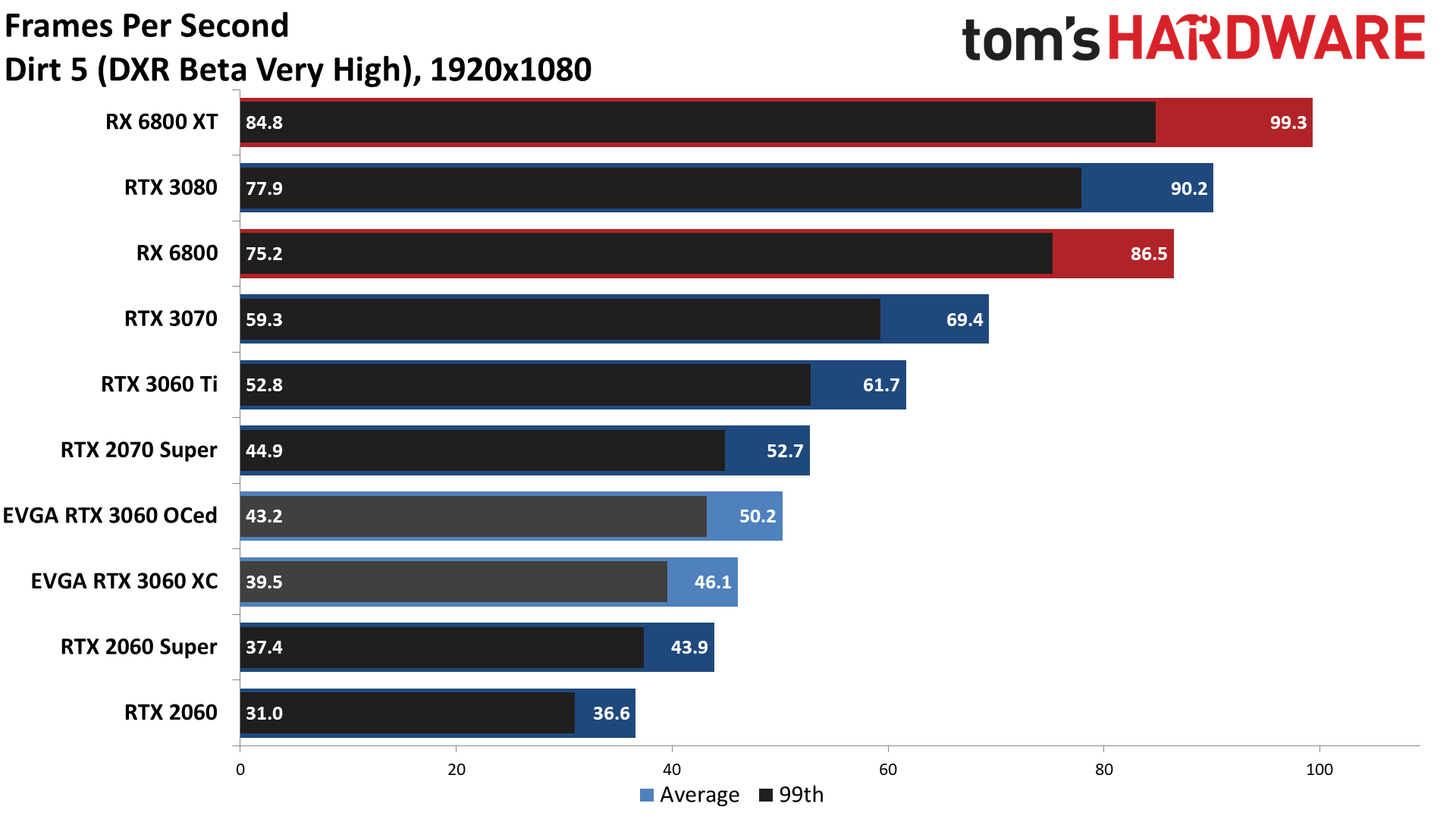

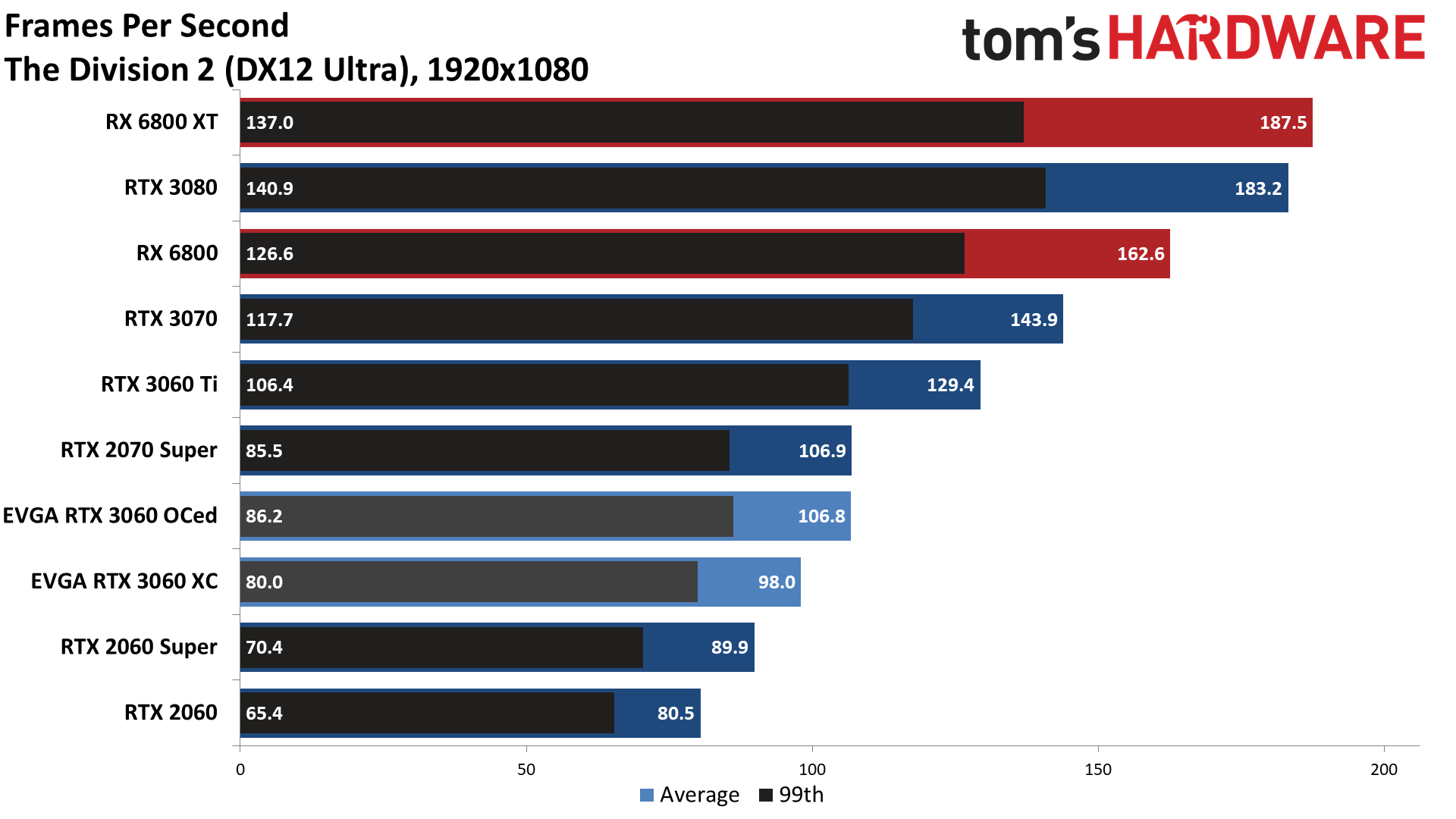



















Of the 13 games tested, the largest differences in performance between the 3060 and 3060 Ti are around 25% — as in, the 3060 is 25% slower than the 3060 Ti, or if you prefer, the 3060 Ti is 32–35% faster than the 3060. Borderlands 3, The Division 2, Dirt 5, Metro Exodus, Strange Brigade, and Watch Dogs Legion all fall in that category, with a spread of 24–26%. That difference corresponds directly with the difference in shader computational performance. Other games show less of a gap, mostly due to CPU bottlenecks, with Far Cry 5 (12% slower) being the closest result.
The story doesn't change much when looking at other GPUs. The 3060 delivered a 43% advantage over the RTX 2060 in Watch Dogs Legion, but that's probably due to the increased memory requirements of ray tracing. In most other games, it was only 20–30% faster, and in Final Fantasy XIV it was only 6% faster. Against the RTX 2060 Super, the gap narrows considerably, with a tie in FFXIV and leads ranging from 3–13% elsewhere. So, about 18 months after the 2060 Super launched, Nvidia has a card that's theoretically 5–10% faster and costs 18% less. That's definitely progress, but it's not a massive improvement.
Incidentally, we don't have the full suite of results for older cards like the GTX 1060 6GB (again, due to including some ray tracing games), but in our limited test suite (which excludes Assassin's Creed, Dirt 5, Horizon Zero Dawn, and Watch Dogs Legion), the 3060 is over double the performance. It's also basically tied overall with the RX 5700 XT, but with ray tracing support and with lower power use.
Get Tom's Hardware's best news and in-depth reviews, straight to your inbox.



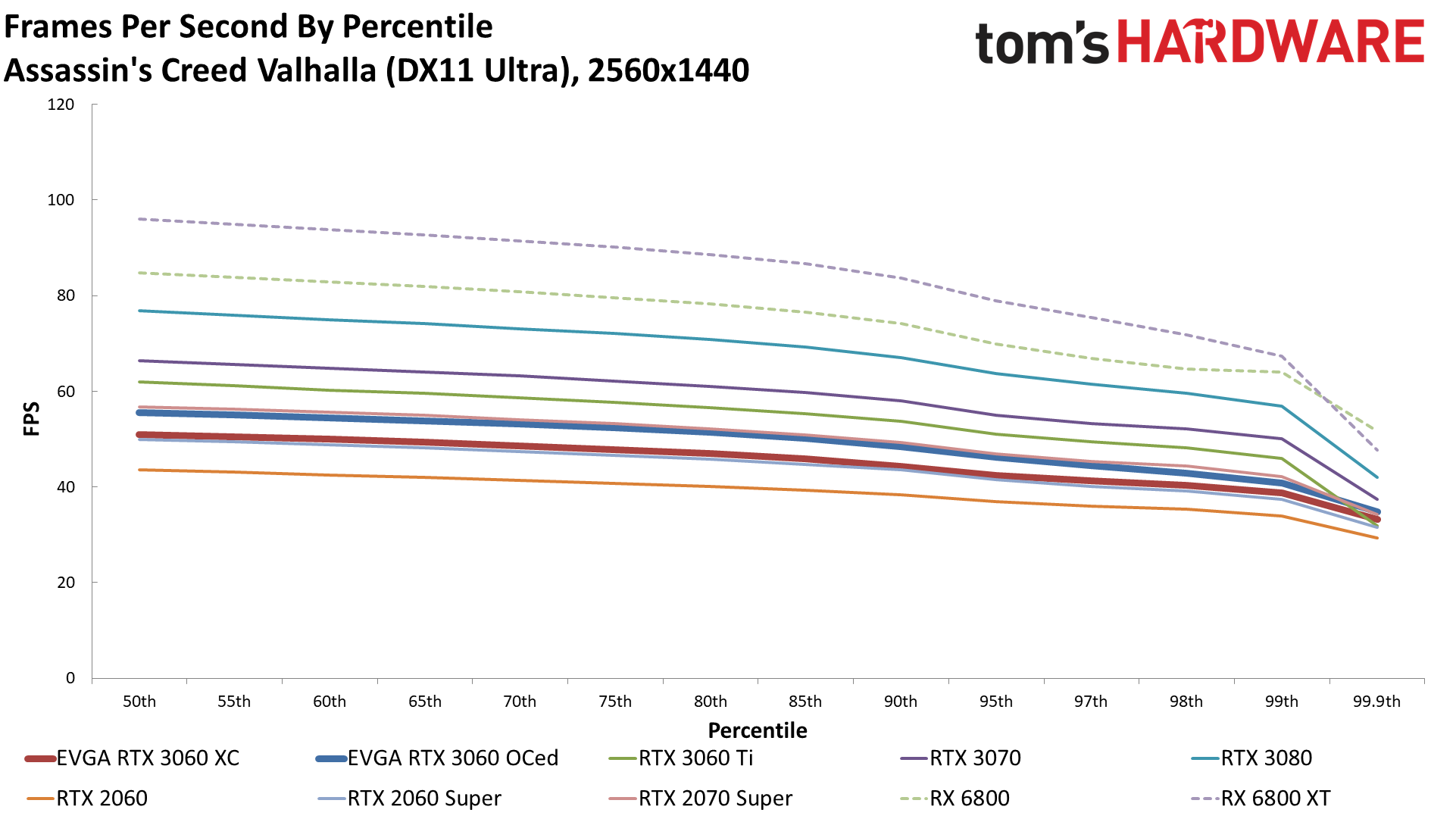


















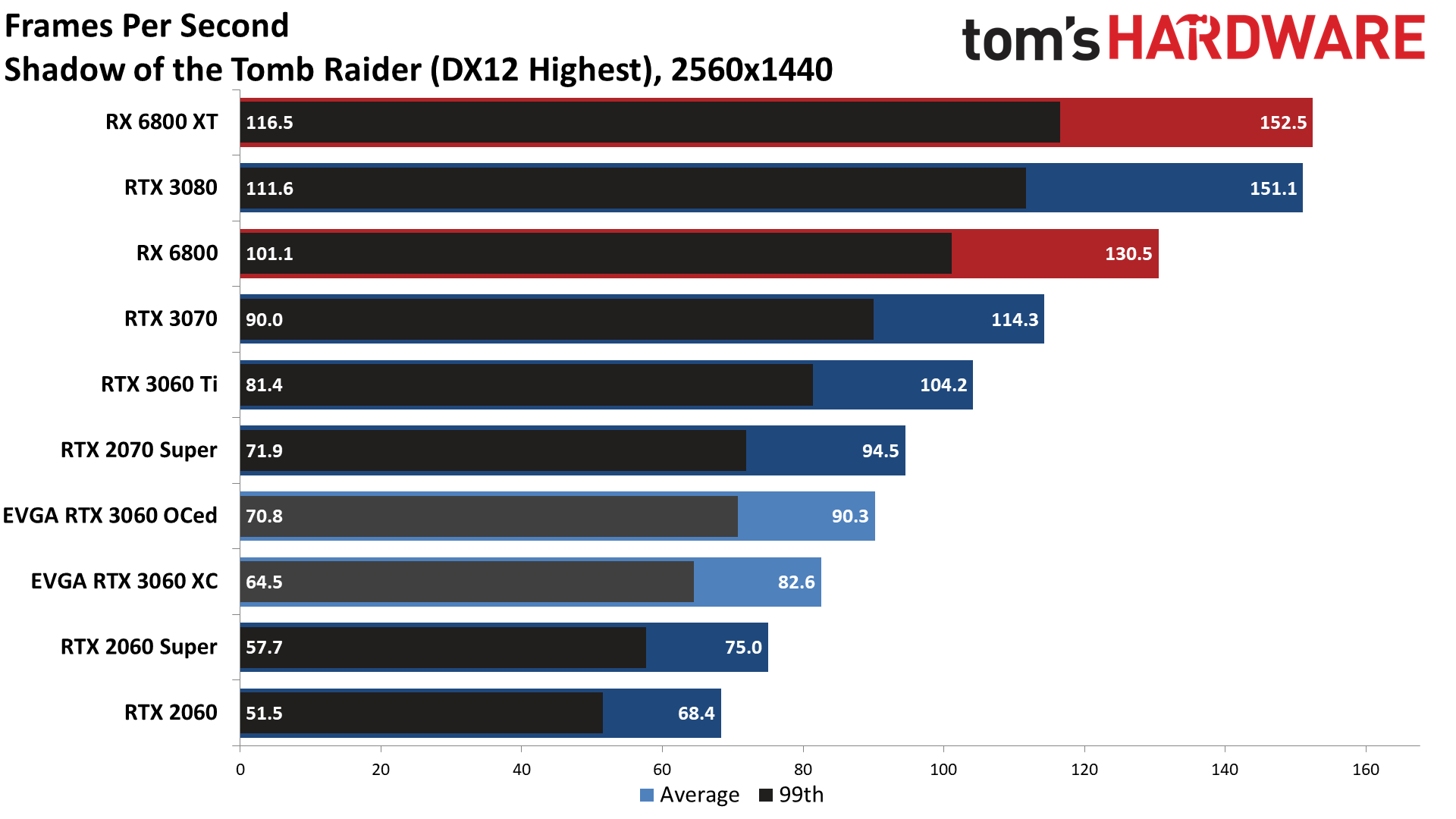

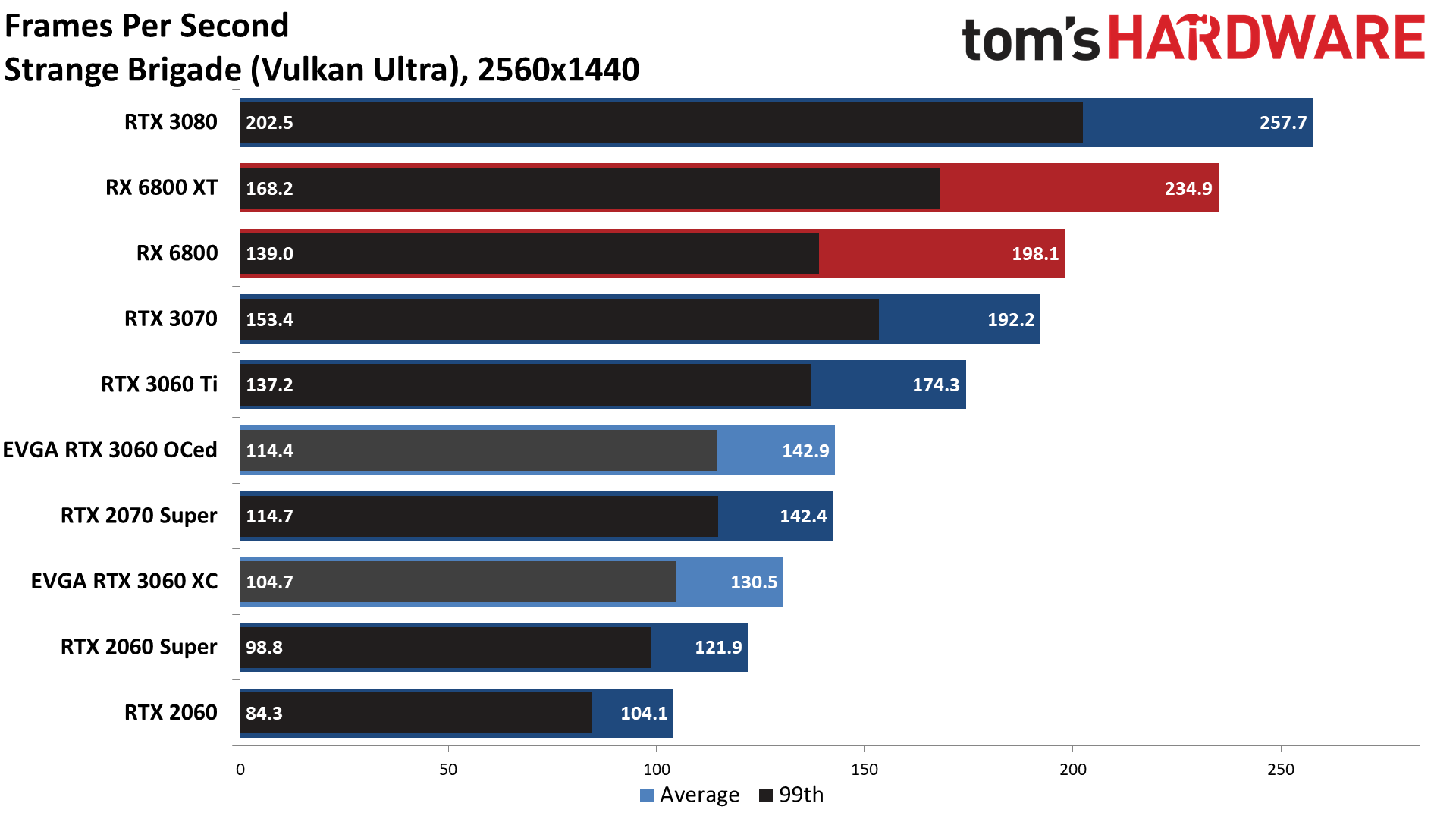



Increasing the resolution to 1440p doesn't radically alter the overall relative standing of the RTX 3060. Actual performance drops by 25%, and it's now 22% slower than the 3060 Ti on average, but it's also 24% faster than the RTX 2060 and 8% faster than the 2060 Super. Factory overclocked cards will do a bit better, but even though the card technically has 3584 GPU cores, compared to Turing it behaves more like a card with about 35% fewer cores (due to the shared FP32/INT32 cores).
About half of our test suite still averages over 60 fps, but Assassin's Creed Valhalla, Borderlands 3, Dirt 5, Metro Exodus, Red Dead Redemption 2, and of course Watch Dogs Legion (with ray tracing enabled) all come up short. Actually, even if we enabled DLSS Quality mode in Watch Dogs Legion, it can't get to 60 fps at ultra quality with ray tracing enabled — even at 1080p.
That's a good example of how far the RTX 3060 can go. If you're running at medium to high settings and with DLSS, ray tracing at 1080p and maybe 1440p is viable. Maxed out quality in many of the games that support ray tracing is going to prove too much for the GPU. It's slightly faster than the RTX 2060 Super, but that card was also at the bottom end of what we'd recommend if you want to run with all the eye candy enabled.



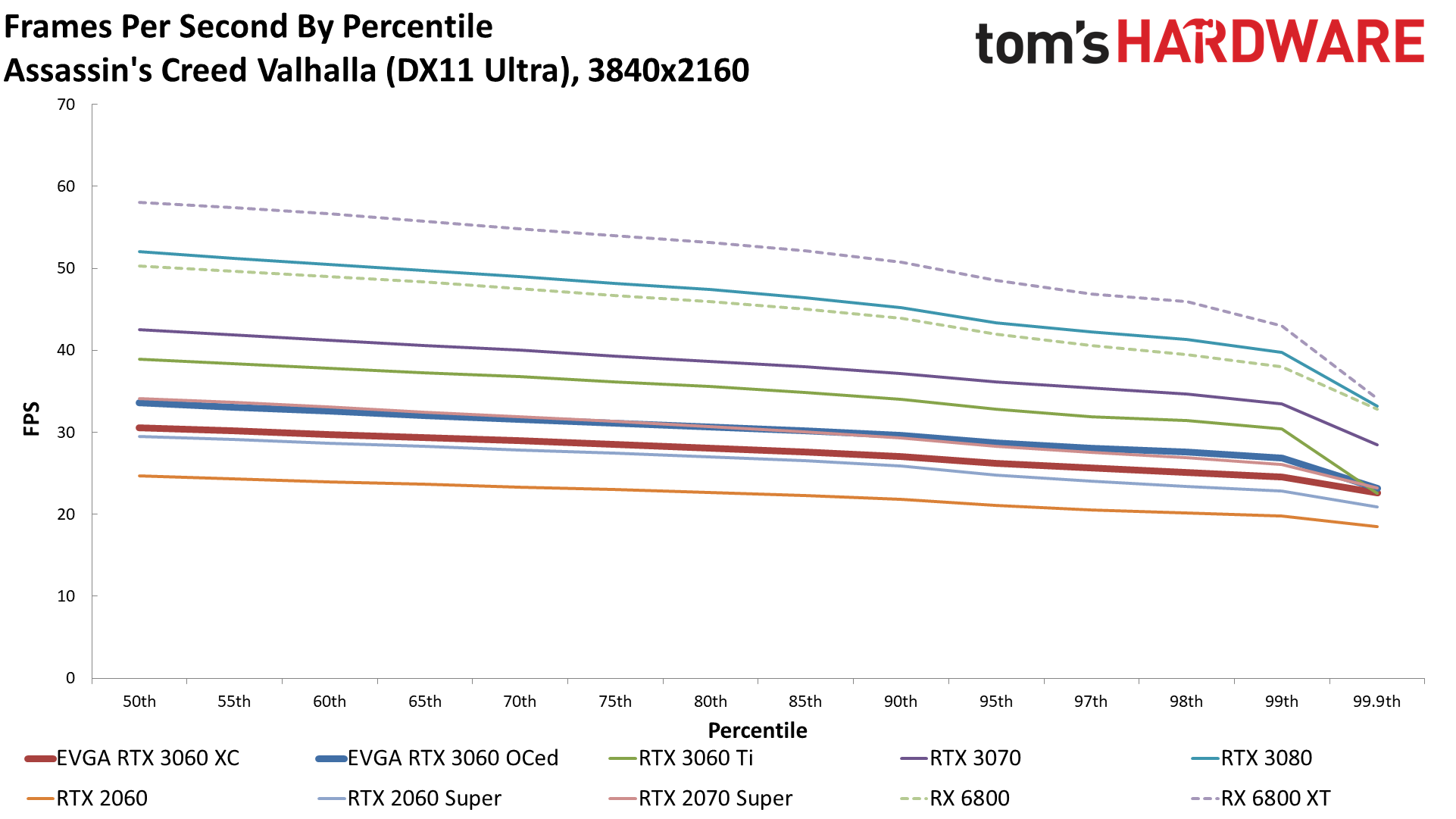






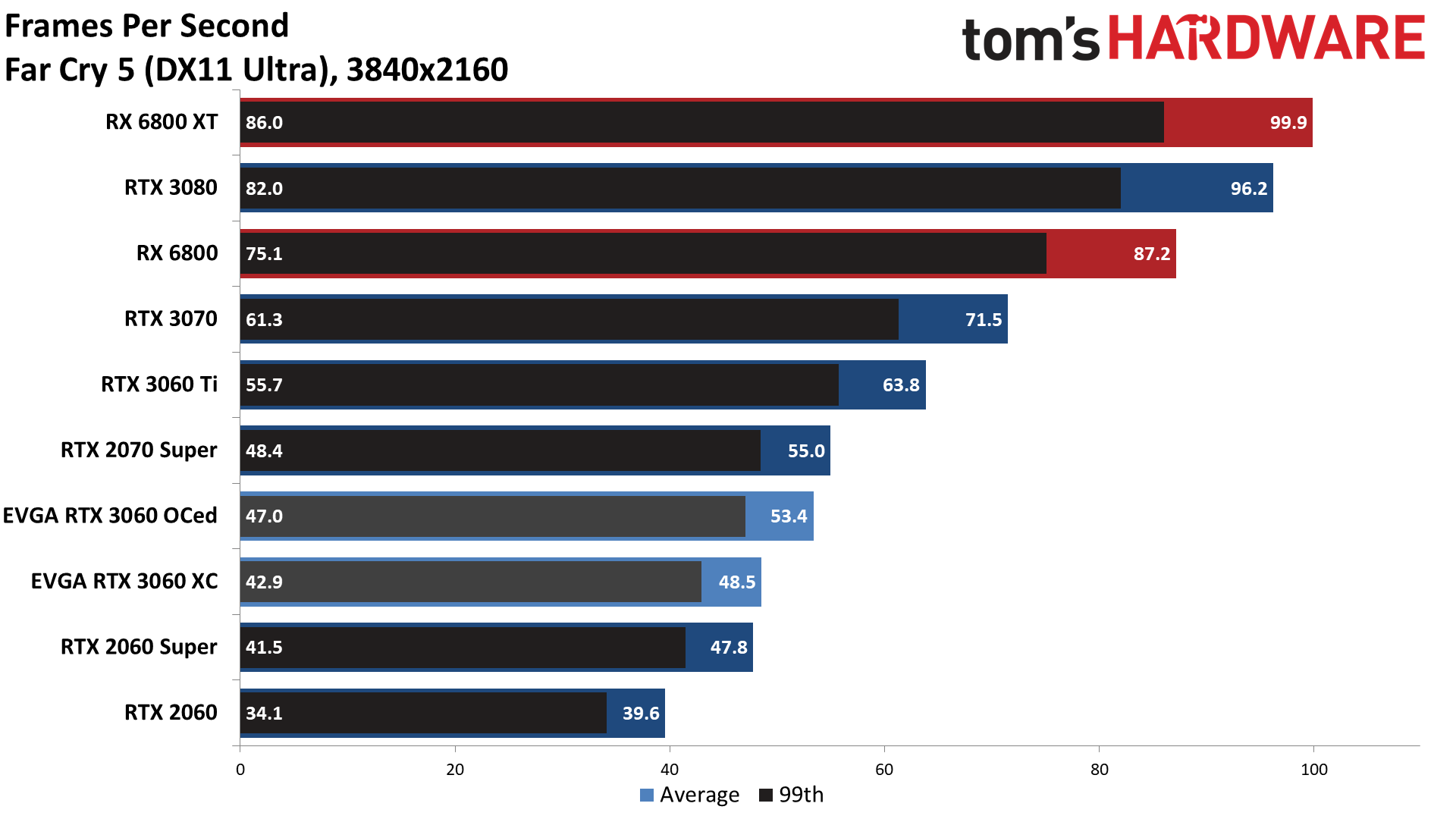





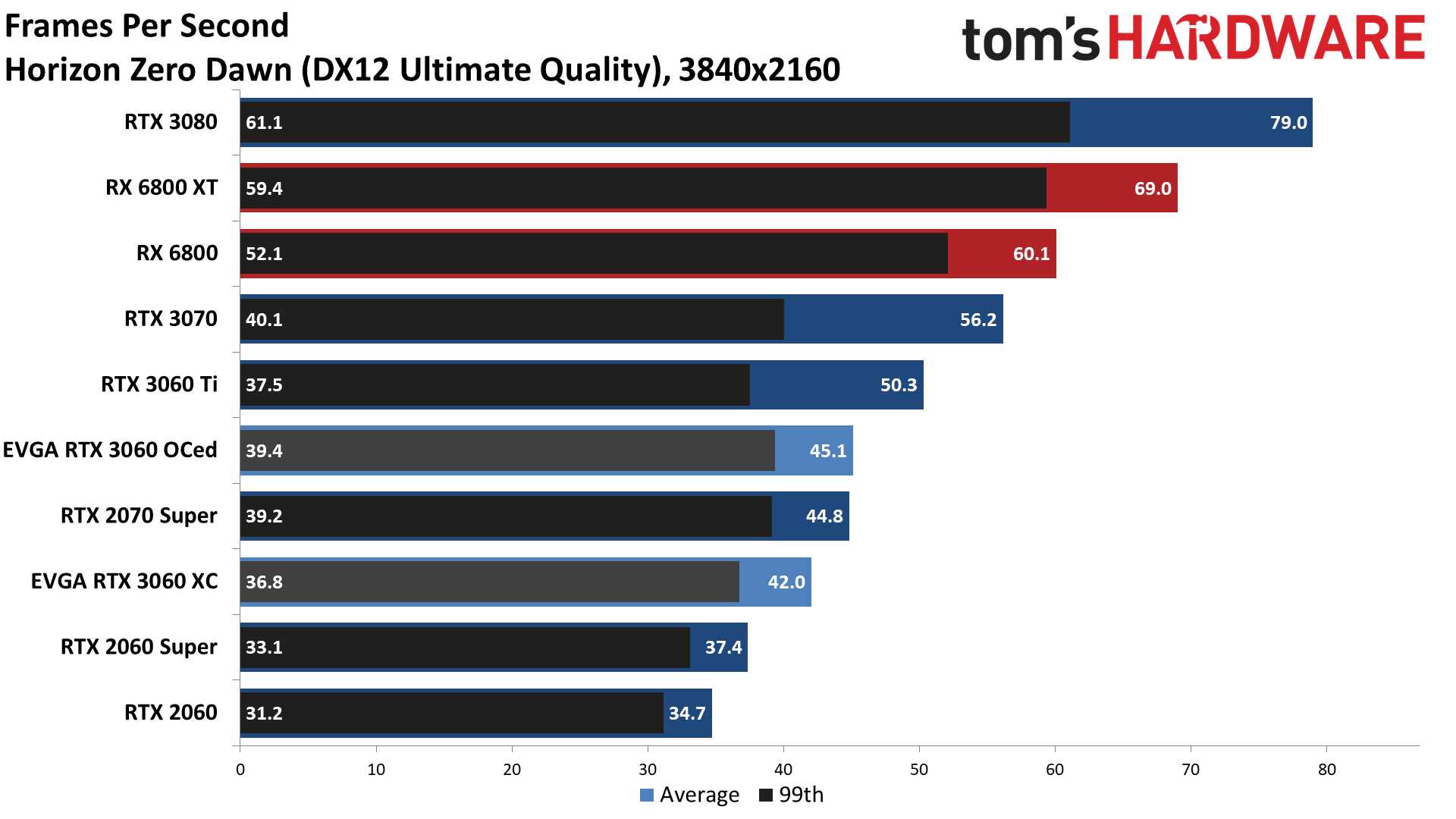







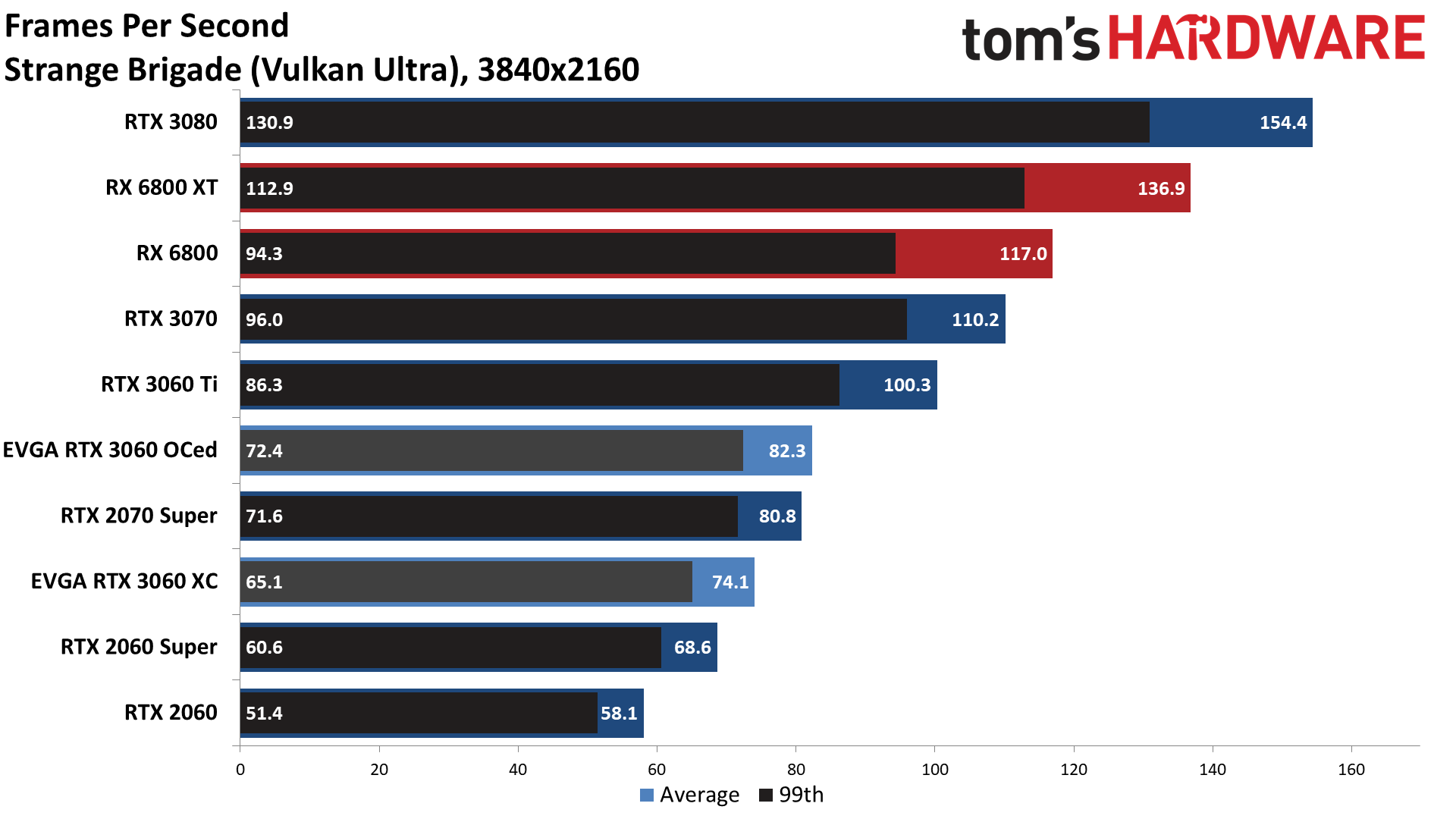

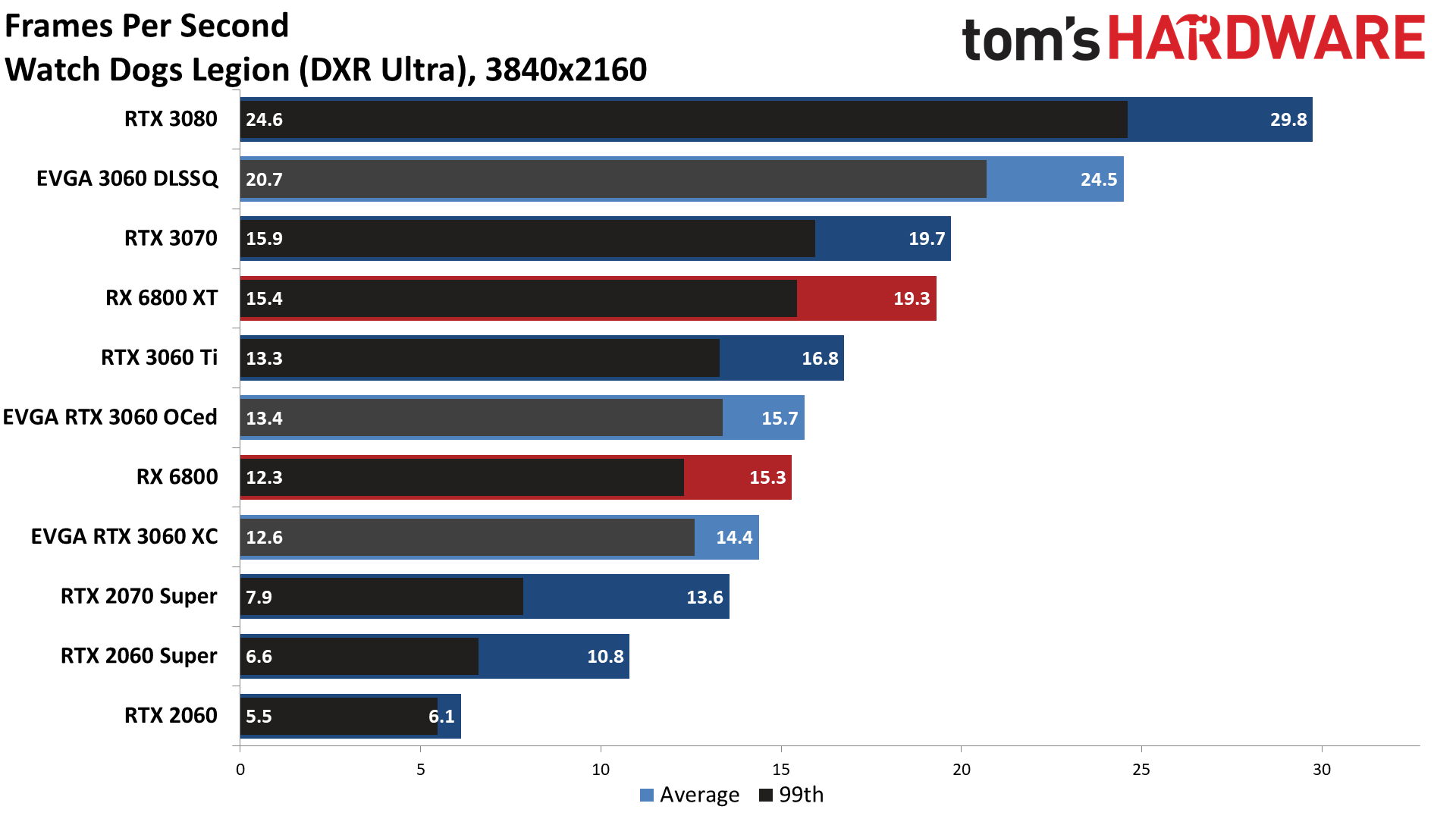

4K gaming proved to be a bit much for the RTX 3060, at least if you're hoping for 60 fps gameplay. Some games can get there, especially if you're willing to drop the settings a notch or two, but at our Ultra settings only two games in our suite managed smooth framerates: Forza Horizon 4 and Strange Brigade — neither of which are particularly demanding. A few others came close to 60 and should be fine with a G-Sync compatible monitor, but several games struggled to stay above 30 fps, and both games with ray tracing enabled (but no DLSS) dropped well below 30.
The 3060 fell 23% behind the 3060 Ti, but it also beat the 2060 by 32% — a bit of a pyrrhic victory, considering the actual fps, but having double the VRAM certainly helped. If you're hoping to game at 4K native, we recommend stepping up to a more potent graphics card. Or you could do what the latest consoles do and shoot for 30 fps with dynamic resolution scaling. Basically, the RTX 3060 looks to be roughly the same level of performance as the PS5 GPU.
GeForce RTX 3060 Mining Performance
Nvidia made a big deal about crippling the RTX 3060's mining performance. That doesn't mean you can't mine on the card, however; it's just not as profitable as it otherwise could have been. We did a short test of mining performance, using NiceHashMiner, to see how the card managed with a variety of different mining algorithms. Here are the results.
The good news is that DaggerHashimoto, aka Ethash, which is the algorithm used by Ethereum, was definitely a lot lower than expected. It would start at 45-50MH/s and quickly drop to about half that speed. This happened with every piece of miner software we tried: Excavator, NBMiner, PhoenixMiner, and T-Rex. Of course, that doesn't cover every possible miner, but it's a fair start.
The bad news is that there are a lot of other mining algorithms, and in some of these — like Octopus — the RTX 3060 is still reasonably profitable. With the recent drop in Ethereum pricing, and the increased difficulty, at 45-50MH/s the RTX 3060 would have netted around $5.50 per day. In Octopus, it can still do around $4 per day, which means it could hit the break-even point in just 82 days at current rates.
Obviously, the rates are prone to wild swings, but given the potential profits, there's no way miners don't buy these cards. Plus, there's no guarantee that some future miner update doesn't figure out a way around Nvidia's driver and firmware protections, and miners are probably counting on that. It would technically be more profitable to buy a different GPU — even the RTX 2060 can beat the 3060 in mining profitability right now — but the current shortages mean that miners will try to buy up any reasonably priced graphics card.
MORE: Best Graphics Cards
MORE: GPU Benchmarks and Hierarchy
MORE: All Graphics Content
Current page: GeForce RTX 3060 Gaming Performance
Prev Page EVGA GeForce RTX 3060 XC Teardown Next Page GeForce RTX 3060: Power, Temps, Fan Speeds, and Clock Speeds
Jarred Walton is a senior editor at Tom's Hardware focusing on everything GPU. He has been working as a tech journalist since 2004, writing for AnandTech, Maximum PC, and PC Gamer. From the first S3 Virge '3D decelerators' to today's GPUs, Jarred keeps up with all the latest graphics trends and is the one to ask about game performance.


